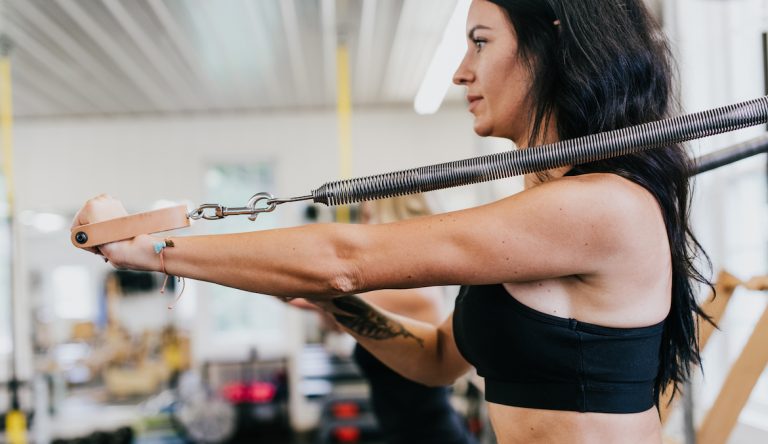
[ad_1]
However, this in-vogue word might be causing some confusion in fitness. Mainly with the difference between “low impact” and “low intensity.” Because, guess what, these workouts are not the same thing.
“The inclusion of the moniker of ‘low’ is what really tends to throw people off,” says Lynsey Price, the director of training and development at SLT, who has seen people mixing up the terms. “Workouts can be low impact and low intensity, but like SLT, workouts can also be low impact and high intensity.”
First thing’s first, let’s get these workout types defined.
What is a low-intensity workout?
The advent of hot girl walks and increasing emphasis on the importance of recovery means you might have been hearing more about “low-intensity” workouts. These are workouts where your heart rate increases but doesn’t spike, made up of less strenuous forms of continuous movement.
“Low intensity speaks specifically to the ‘steady state’ in which the heart rate levels remain during physical exertion,” Price says.
Examples of low-intensity workouts are taking a walk or easy bike ride, doing restorative yoga or anything else that gets you moving while “you could still easily hold a conversation without getting too winded,” explains Price.
This doesn’t mean they’re not an important part of a fitness routine. Low-intensity workouts provide necessary recovery for your muscles in between harder efforts while still keeping your blood flowing and your body moving. And, frankly, they’re just really enjoyable.
“In addition to improving cardiovascular fitness, some other benefits of low-intensity workouts are less fatigue and pain, elevated mood, improved sleep quality, and better mobility and balance, all while protecting the joints,” Price says.
What is a low-impact workout?
Just because this workout has the word “low” in the title does not make it easy. Unlike low-intensity workouts, “low impact” does not refer to the amount of exertion you’re undertaking. Instead, it’s about how much (or how little) external stress you’re putting on your joints.
“Low-impact exercises minimize the forces that often ‘rattle the joints’ and put excess ‘wear and tear’ on the body,” Price says.
For example, squats can either be low impact or high impact. A low impact squat is a bodyweight squat, maybe slowed down so you achieve more time under tension. A high-impact version is a jump squat, because the external force of landing back on the ground places pressure on your knees and hips.
The benefit of low-impact workouts are that they deliver muscular development without causing that “wear and tear.” “Low-impact workouts are far more sustainable for the body,” Price says. “They minimize injury, and they also promote recovery.”
Price’s favorite low-impact workout moves involve slow and controlled movements (like during an SLT class). That includes “lunges and side lunges with sliders, and bodyweight oblique work that can be done kneeling and planking on the floor. Weights, ankle weights, and bands are always great to add in, too!”
Can low-impact and low-intensity workouts overlap?
A workout can be low impact and low intensity, such as walking or gentle yoga. However, a low-impact workout like SLT is actually a high-intensity workout because it “focus[es] on safely working the muscle groups to utter, complete fatigue,” but those slow, controlled movements don’t stress the joints as much as a HIIT class or a run.
It would be pretty difficult to do a low-intensity high-impact workout: Can you imagine jumping or sprinting without your heart rate spiking?
So yes, there is some overlap between low impact and low intensity, but each has their own benefits, and one certainly does not require the other.
“Low-impact high-intensity workouts put less stress on the joints while still elevating the heart rate, improving cardiovascular health and muscular endurance,” Price says. At the same time, she says, “people are feeling and promoting the positive effects of low-intensity exercise, and are far more focused on engaging in activities that are sustainable for their bodies in the long run.”
Bottom line? Get low in the way that feels right to you.
[ad_2]
Source link